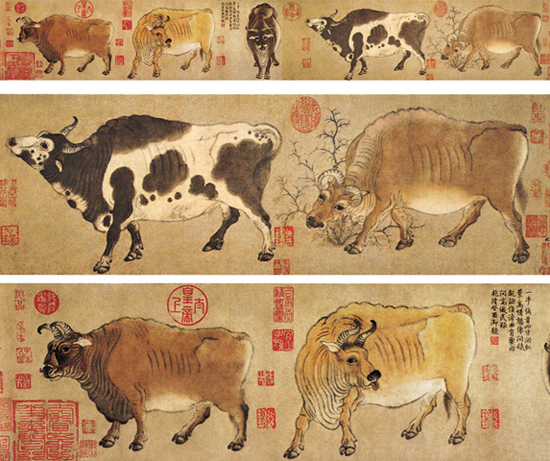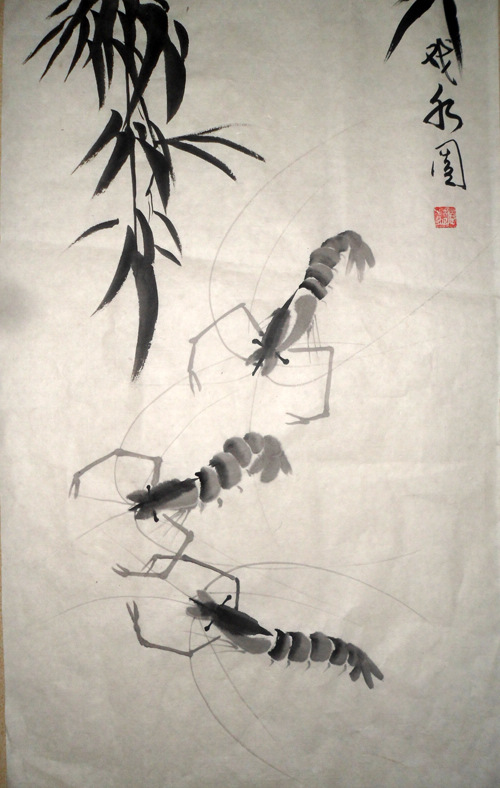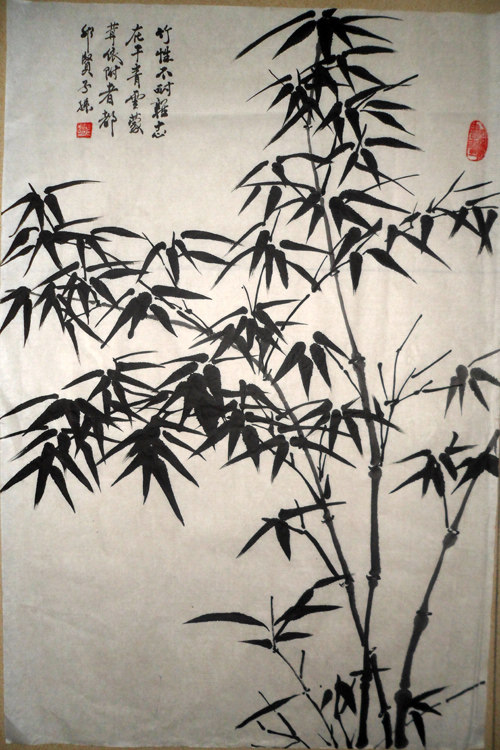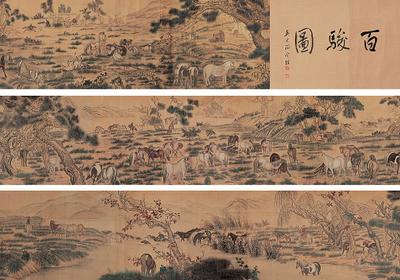Chinese animal painting is a kind of painting depicting animals, just as the name implies. Generally, the animal painting focuses on the auspicious animal in China, such as the dragon, phoenix and Kylin. When they appear, Chinese people believe that they would bring good luck to them. Other animals such as tiger, lion, elephant and deer etc, they were also worshiped by the ancient people, and they were associated with the theology and political category.

Five Oxen
"Five Oxen" is a painting by Han Huang, a prime minister in the Tang Dynasty (618–907). The painting was lost during the occupation of Beijing by the Eight-Nation Alliance in 1900 and later recovered from a collector in Hong Kong during the early 1950s. Now it is stored in the Palace Museum in Beijing.
The painting is 139.8 cm long and 20.8 cm wide. The five oxen in varied postures and colors in the painting are drawn with thick, heavy and earthy brushstrokes. They are endowed with subtle human characteristics, delivering the spirit of the willingness to bear the burden of hard labor without complaints.
Most of the paintings recovered from ancient China are of flowers, birds and human figures. This painting is the only one with oxen as its subject that are represented so vividly, making the painting one of the best animal paintings in Chinese art history.





